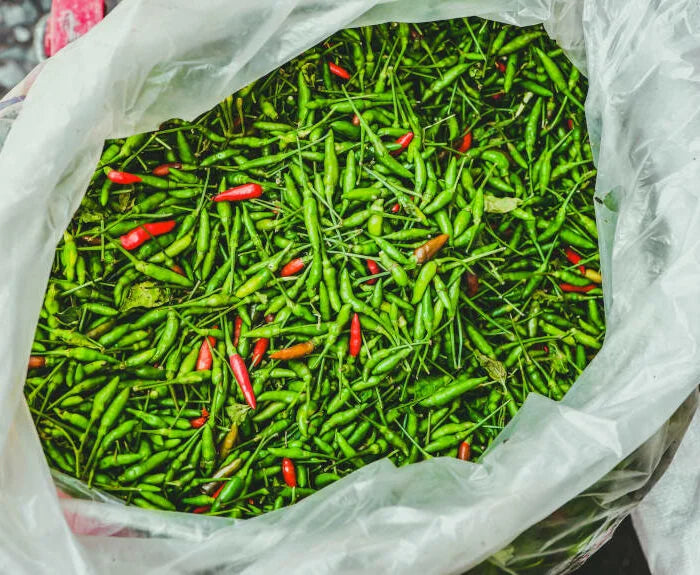Exploring the Bird’s Eye Chilli
Mar 21, 2021
We love this pepper for its deceiving underdog nature. Why? The bird’s eye chilli—at around an inch long—packs some serious heat into a small package. It’s proof that you should never judge a book (or a pepper) by its cover.
A staple in regional cuisines across South America, Africa and Asia, this bite-sized chilli has garnered an impressive number of unique nicknames to reflect its widespread use. Depending on where you are, you can expect to hear the iconic bird’s eye pepper referred to as “piri-piri,” “peri-peri,” “the African devil,” or “the red devil pepper.” But a pepper by any other name is just as hot, so we’ll stick with “bird’s eye chilli” as we explore its distinctive flavor, heat, origin and traditional uses.
The Bird’s Eye Chilli: Flavor and Heat

The bird’s eye chilli may not have the rockstar status that the ultra-hot African ghost pepper enjoys, but it’s still among the spicier peppers in the world—hot enough that you’ll want to wear gloves while handling it raw, unless you’re keen on sustaining some pretty serious skin burns.
Weighing in at an average of 175,000 Scoville heat units (SHU), this chilli is approximately 22 times hotter than the spiciest jalapeño. Despite its heat, its core flavor remains pleasantly fruity, with earthy notes and a slightly peppered finish.
Where Does the Bird’s Eye Chilli Grow?
Like many species of chilli, the African Bird’s Eye Chilli has roots that trace back to Latin America—specifically Mexico. Introduced to the world by Portuguese and Spanish colonialists, these little firecrackers first popped up on the African continent centuries ago.
Since arriving on African soil, the Bird’s Eye Chilli adapted slightly to accommodate the region’s distinct climate, leading eventually to the development of the African Bird’s Eye Chilli—a bird’s eye variation with its own distinct aroma, appearance and flavor.
Today, African Bird’s Eye chillis can be found growing wild across Ethiopia and several other African countries. It’s also farmed in Kenya, Ghana, Uganda, Zimbabwe, Zambia, Mozambique and South Africa.
When it comes to cultivation, a region’s climate and soil conditions have a pretty big say in how an adult pepper matures. While chillis grown in Uganda may bear a general resemblance to those sourced from Zimbabwe, true pepper aficionados will note subtle distinctions between the two.
For flavor’s sake, we’ve chosen to source our African bird’s eye chillis from small South African farms, whose temperate coastal climate and higher elevation produce chillis with rich notes and vibrant heat.
Traditional Uses of the Bird’s Eye Chilli

Its complex taste and bold heat have earned this chilli a reputation as a highly-addictive, incredibly delicious addition to many regional dishes. We’re talking soups, stews, hot sauces and meat dishes—there’s not much that can’t be made better with the African bird’s eye chilli’s delectable sizzle.
Of course, no discussion of this little firecracker could be complete without the mention of its use in Mozambican peri-peri chicken, a zesty African classic that balances the African bird’s eye chilli’s piquant sizzle with the vibrant flavors of fresh lime, garlic and vinegar. It’s also, of course, the starring ingredient in our Bird’s Eye Chilli Sauce, which brings the pepper’s unique heat and striking flavor to pizza, chicken, meat, fish and just about anything else.




